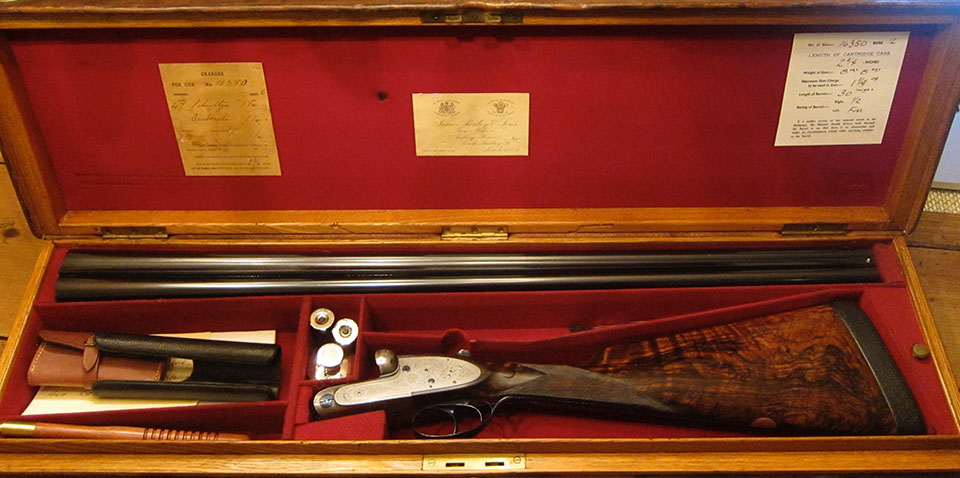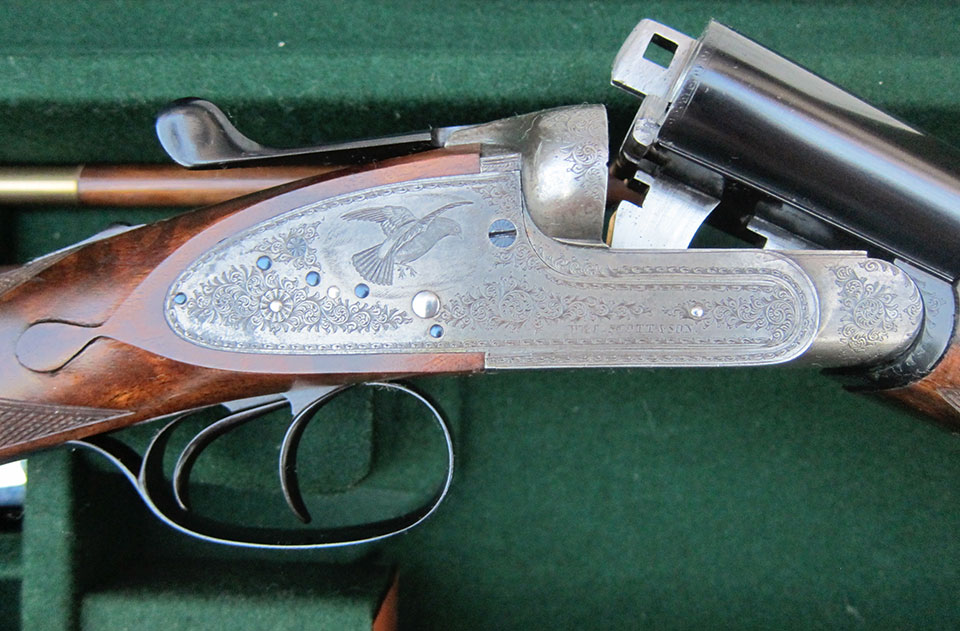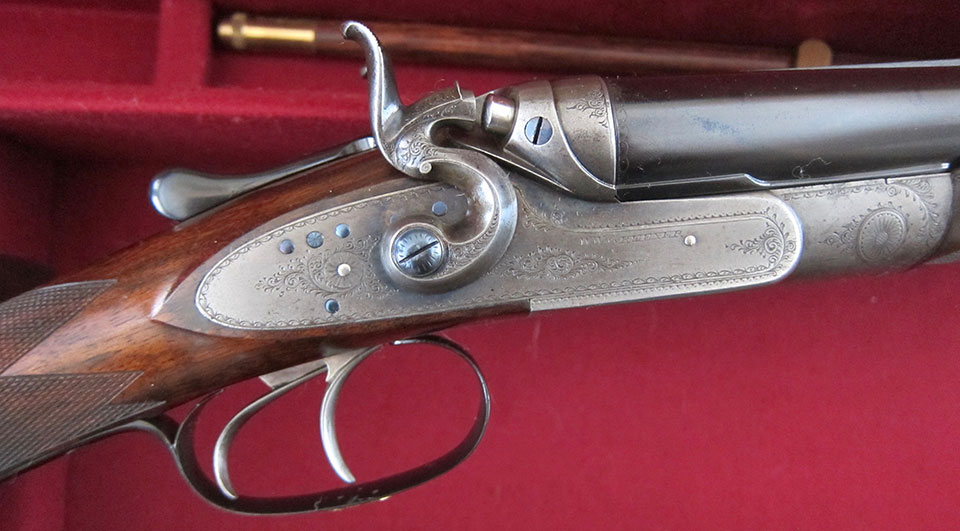The family of vintage gun enthusiasts lost its Godfather in September.
If you are at all interested in shooting old British hammer guns and pigeon guns, Cyril Adams may be the reason why, even if you don’t know his name.
If you don’t know his name, get onto Amazon and search for ‘Lock Stock & Barrel’, then buy it. This was the book that started it all off. I just went to look at my copy for old-times’ sake when I heard of Cyril’s passing but it wasn’t there on the shelf; meaning I lent it to someone who didn’t bring it back! Such is the fate of good books.
When he wrote the book, in 1996, with his friend Robert Braden, Cyril was already decades into his career in the gun trade. He came into it through his love of, and proficiency at, live pigeon trap shooting.
He discovered how good pigeon guns made in Britain during the heyday of the sport, from 1880 to 1930, were and how such guns gave him a competitive edge.

With the financial means provided by a successful engineering career behind him, Cyril was able to travel and shoot live pigeons all over the globe, later adding ZZ to his repertoire, which he actually believed to be the harder discipline.
He later bought Atkin, Grant and Lang, running it from 1984 until the late 1990s. Throughout his competitive career, Cyril bought and restored guns, selling them as he went, in order to finance more purchases and sales. “I don’t even like selling guns” he once said, “my enjoyment in life with guns is restoring them, saving them from hanging on walls. The only reason I sell them is to get the money to buy some more and do it again”.
Cyril had a very particular way of restoring guns. For him, they had to shoot first and look good second. He wanted his guns to ‘sparkle’ but he demanded they work. That often meant modifications.

Cyril would sometimes add weight to the barrels to provide the balance and weight-profile he wanted. That could mean putting lead shot into the stock, to make the gun move faster, or putting lead or brass bar under the rib, to bring weight forward and smooth the swing.
Another Cyril development was the introduction of chamber-sleeving, which he petitioned the proof house to allow and approve. Chamber sleeving has two applications. The first is to restore pitted chambers to their original specifications. This is necessary when chambers are pitted or have become over-sized or irregular in shape from the removal of pits. In such cases, a chamber will be bored out and inserts welded in and cut to the correct size.
Another Cyril development was the introduction of chamber-sleeving.
The second application is changing a gun from one bore to a smaller one. In the 1990s, 16-bores were unfashionable and hard to sell, while 20-bores were in high demand and scarce. Cyril chamber-sleeved many 16-bores to 20-bore and sold them to his customers in the United States, where they were used to heavy guns.
Even a 16-bore-weight, British, chamber-sleeved, 20-bore was lighter than most American 20-bore guns. Many Victorian guns were made tight for bore, so a tight-bored 16-bore, teamed with a 20-bore sleeved chamber made for a wide-bored 20-bore barrel, which, used with plastic enclosed-cup wads, produced very efficient patterns. The extra weight reduced felt recoil and made for a steadier gun.
The same process turned 10-bores into 12-bores and 20-bores into 28-bores.This enabled Cyril to get premium prices in the USA for guns he was able to buy in the UK for very low prices. However, it was not purely a commercial project.

Cyril built himself a gun using the same principle. It is a wood-bar action, side-lock, 20-bore but started life as a 16-bore which failed proof - the barrels remained perfect but the action cracked. Cyril sleeved the chambers to his desired size and weighted the barrels to achieve a balance point slightly forward, aided by a longer than average forend. The barrels were ‘new-old stock’ but the rest of the gun was built from scratch in the London trade.
Other examples of Cyril’s restorations include a Grant trigger plate 10-bore pigeon gun with 31” Damascus barrels, chamber sleeved to 3”, 12-bore. This now belongs to American target shooter Bob Mills, who describes it as a ‘clay crusher’.
I once use a gun Cyril had chamber sleeved from 16-bore to 20-bore on high pheasants in Scotland. It is a ‘Monte Carlo B’ side-lock pigeon gun, with 30” barrels, choked 3/4 and 3/4. It proved a killer; very little felt recoil and it folded tall pheasants and partridges very neatly indeed.
Another Cyril classic was a Greener 28-bore hammer gun, which he sleeved to 32” and fitted a flat rib. Again, making a Victorian small bore into a serious game-getter at range.

Cyril used his contacts in the London gun trade to make sure his guns were always restored and customised to the very highest standards. He handled dozens over the years, I’d estimate the final number at close to three hundred. Most are now in the United States.
To those with a practised eye, a Cyril Adams gun is usually recognised quite quickly. If you encounter one, you can rest assured that it will be a good one to shoot.
Cyril Adams died in Houston in September 2020, a day short of his eighty-second birthday. Those who knew him will miss him.
Published by Vintage Guns Ltd on (modified )




